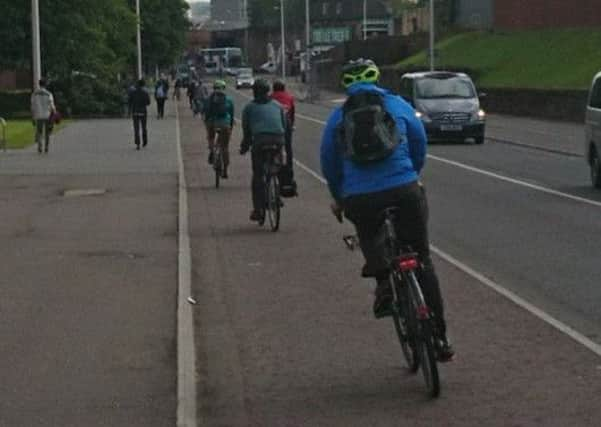Why this Scottish cycle route could be a game-changer - Alastair Dalton


The car park of the building where The Scotsman has its Glasgow base was chockablock with more than 70 vehicles yesterday. And just two bikes.
Cycling home from work the previous night, I crossed rush-hour gridlock on nearby Govan Road. If there is a climate emergency in Scotland, this is it.
Advertisement
Hide AdAdvertisement
Hide AdVehicles are the country’s largest source of greenhouse gas emissions, which increased by 11 per cent between 1990 and 2017.
That’s not surprising when significantly more Scots are now driving alone since devolution in 1999, with two in three cars now having just the driver aboard.
But there’s virtually no incentive for commuters to switch, and scant sign of it for decades. Yet on Wednesday, MSPs approved the “toughest climate change laws in the world” to make Scotland carbon neutral by 2045.
How are we going to get there when motoring has got cheaper in real terms, parking is often free, and congested and potholed roads are seen as tolerable in return for the convenience and flexibility of being able to travel around in your own private space. Stuff the pollution, congestion and reduced road safety.
Electric vehicles are no panacea. They may cut emissions, but are still large metal boxes clogging up roads with health-threatening dust pollution from their brakes and tyres. A report this week warned driverless cars could make things even worse because of their likely popularity.
Scotland’s city leaders know there has to be a different way, and have started bold schemes to reallocate road space from vehicles to pedestrians and cyclists.
Glasgow has taken the lead here, with Edinburgh not far behind. The transformation of Sauchiehall Street in the country’s largest city is a dramatic illustration of what can be achieved.
What was a notorious city centre vehicle racetrack has been narrowed with parking removed, providing space for a widened pavement incorporating a two-way cycle lane, trees and benches. It even looks Continental.
Advertisement
Hide AdAdvertisement
Hide AdBut the city council holds its biggest hopes for what could be a groundbreaking new cycle route into the city centre from the south side.
Largely complete and due to be officially launched next year, the two-mile South City Way from Queen’s Park is seen as providing a “gold standard” for other new segregated bike lanes across Scotland.
Riding over the finished sections last week with city council sustainability and carbon reduction convener Anna Richardson - who’s in charge of cycle lanes - it was immediately apparent how the route aims to normalise cycling.
The wide lanes run south from the River Clyde along Gorbals Street past the Citizens Theatre, Pollokshaws Road and Victoria Road, segregated by being one step up from the road, and one step down from the pavement.
They appear to form a natural part of the road, with a minimum of clutter from bollards and other infrastructure, and subtly differentiated from the pavement with red chip mixed into the Tarmac.
That is stark contrast with some of Glasgow’s previous attempts at segregated lanes, which are narrow, have confusing road markings and seem over-engineered.
Ms Richardson’s vision is car commuters on the South City Way route will be inspired by seeing cyclists sailing past them, and give it a try. Edinburgh and other cities will be watching closely to see if it might start a cycle revolution.